Vocabulary development is a crucial aspect of education, impacting students' reading comprehension, writing skills, and overall academic success. One effective strategy for teaching and reinforcing vocabulary concepts is the Frayer Model. Developed by Dorothy Frayer and her colleagues in 1969, this graphic organizer provides a comprehensive framework for exploring and understanding new words. In this article, we will delve into the Frayer Model and explore how educators can use it to enhance vocabulary instruction.
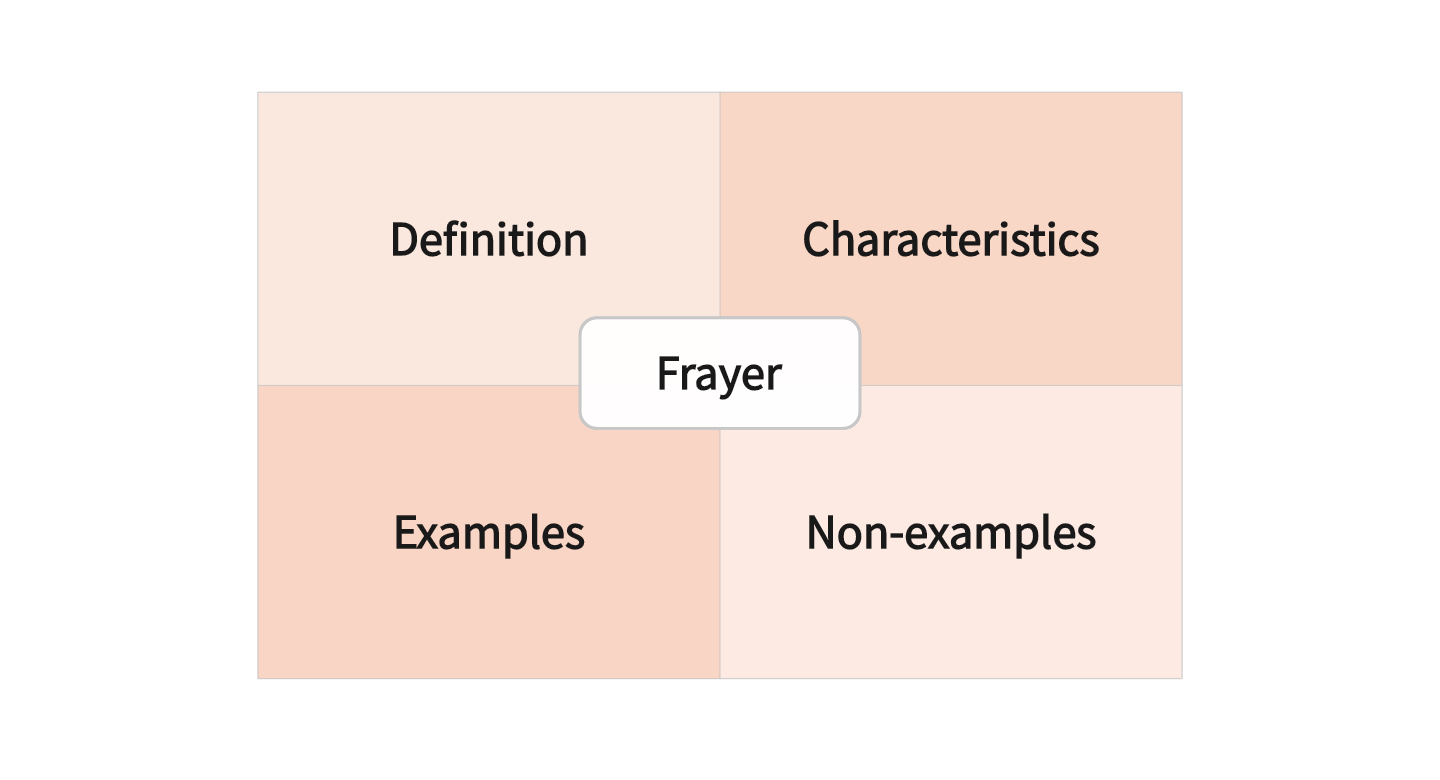
Part 1. Understanding the Frayer Model
The Frayer Model is a graphic organizer that encourages students to delve deeply into the meaning of a word. The model consists of four quadrants, each designed to guide students in examining various facets of a word:
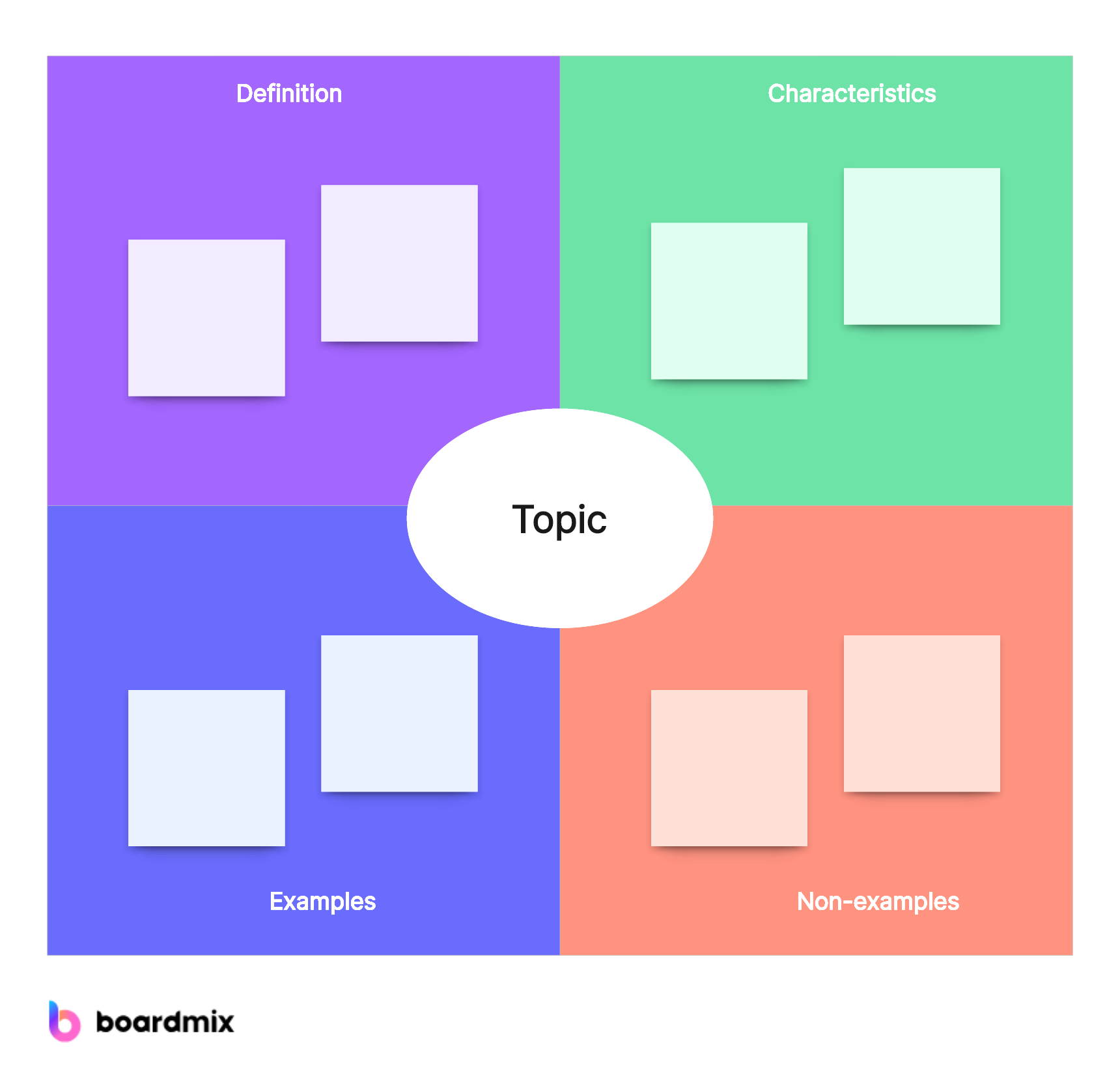
1. Definition:
In this quadrant, students provide the formal meaning of the word. This involves consulting dictionaries or other authoritative sources to ensure accuracy. Encouraging students to use their own words fosters comprehension.
2. Characteristics:
Students identify the essential characteristics or attributes associated with the word. This may include the word's properties, features, or qualities. Encouraging students to consider how the word is used in different contexts enhances their understanding.
3. Examples:
This quadrant prompts students to provide examples of the word in context. Real-world examples help students see how the word is used in various situations, reinforcing its meaning and promoting a deeper connection to the word.
4. Non-examples:
Here, students list instances that do not represent the word. This quadrant is crucial for dispelling misconceptions and refining students' understanding. It challenges them to consider the boundaries and limitations of the word's meaning.
Part 2. Benefits of Using Frayer Model
The Frayer Model offers several benefits across various educational contexts:
1. Promotes Critical Thinking
The Frayer Model encourages students to think critically about words, considering both their specific meanings and broader applications.
2. Active Engagement:
By actively engaging with the word through various dimensions, students develop a more comprehensive and nuanced understanding.
3. Personal Connection
The model allows students to establish a personal connection with the words, fostering a sense of ownership and relevance.
4. Clarifies Ambiguities
The inclusion of non-examples helps clarify potential ambiguities and ensures a more accurate understanding of the word.
Part 3. How to Use Frayer Model in Vocabulary Teaching?
Using the Frayer Model in vocabulary teaching is a structured and effective approach that helps students develop a deeper understanding of words. Here's a step-by-step guide on how to implement the Frayer Model in your vocabulary instruction:
1. Introduction and Explanation
- Introduce the target word, providing pronunciation, part of speech, and relevance.
- Explain the Frayer Model and its four quadrants: Definition, Characteristics, Examples, and Non-examples.
2. Modeling the Process
- Choose a word and model how to complete a Frayer Model.
- Think aloud to illustrate the decision-making process for each quadrant.
3. Collaborative Discussion
- Facilitate a class discussion on the target word.
- Encourage students to share initial thoughts on its meaning, characteristics, and possible examples.
4. Independent Completion
- Have students work independently or in small groups on their Frayer Models.
- Provide support and clarification as needed.
5. Sharing and Enhancing
- Conduct a class discussion for students to share and compare their Frayer Models.
- Encourage the addition of visual representations to enhance understanding.
6. Integration and Review
- Integrate the Frayer Model into reading and writing activities.
- Periodically review and revisit the Frayer Models to reinforce retention.
By incorporating the Frayer Model into your vocabulary teaching, you provide students with a structured framework for exploring and internalizing new words. This approach not only promotes better understanding but also encourages critical thinking and active engagement in the learning process.
Part 4. The Best Tool to Streamline Frayer Model Using
Boardmix, an innovative online whiteboard tool, revolutionizes vocabulary teaching by streamlining the use of the Frayer Model. With our extensive range of drawing templates, educators can easily create interactive and engaging vocabulary lessons. Boardmix allows teachers to visually map out definitions, characteristics, examples and non-examples of new words in a simple and effective manner. This not only enhances students' understanding but also fosters their critical thinking skills. Unlike traditional methods, Boardmix's digital Frayer Model is easy to edit and share, making vocabulary teaching more efficient than ever.
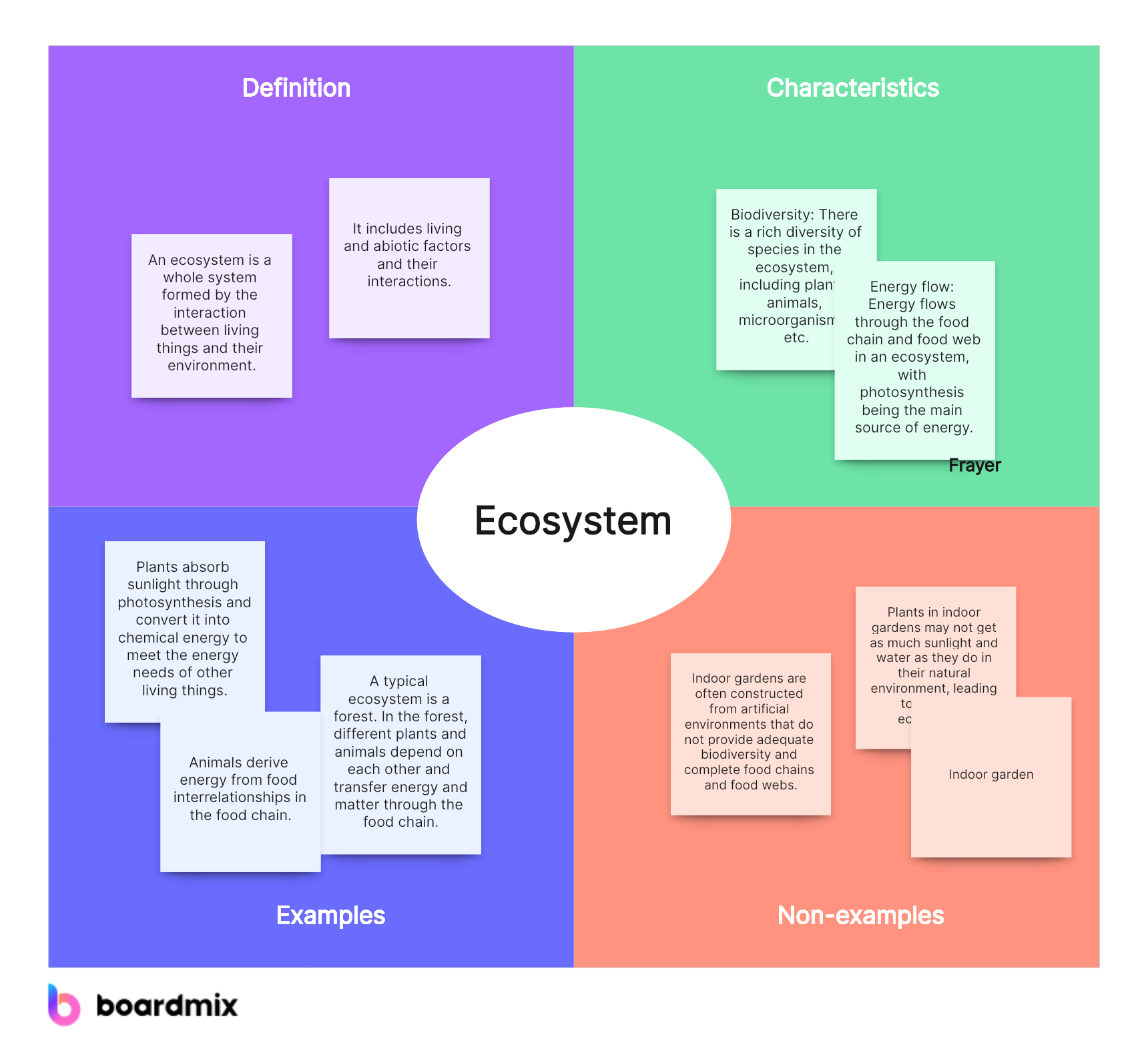
Key Features of Boardmix:
- Interactive Drawing Templates: Boardmix offers a wide variety of customizable drawing templates, enabling users to create and share dynamic visual content effortlessly.
- Real-Time Collaboration: With Boardmix, teams can collaborate in real-time on the same whiteboard, enhancing productivity and fostering creativity.
- Easy Sharing and Exporting: Boardmix allows users to easily share their boards with others or export them in various formats for further use.
- Intuitive User Interface: The user-friendly interface of Boardmix makes it easy for anyone to start creating and collaborating without any technical hurdles.
- Versatile Use Cases: Whether for business brainstorming, project planning, or educational purposes, Boardmix's features cater to a wide range of needs.
How to Use Frayer Model with Boardmix:
Step 1. Open Boardmix: Start by opening Boardmix in your web browser and sign up/in. No downloads or installations are necessary."

Step 2. Choose Template: Navigate to our library of drawing templates and select the Frayer Model template.
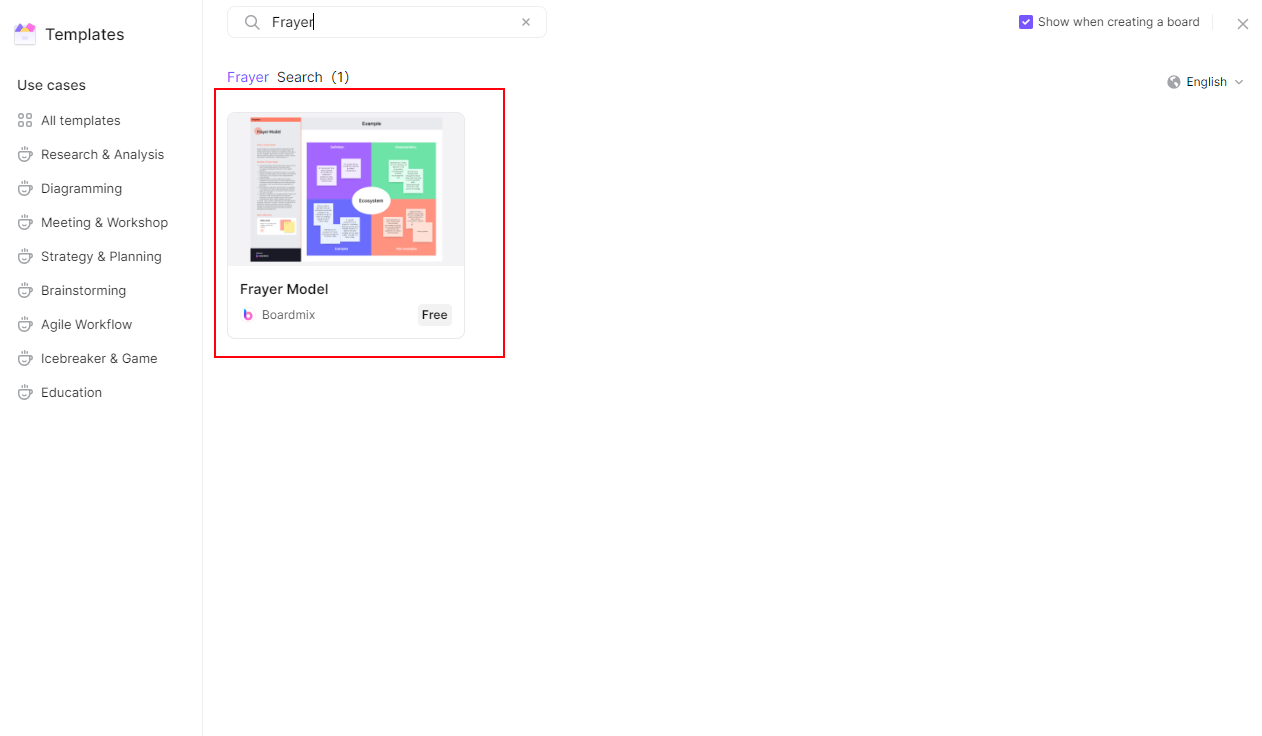
Step 3. Customize Your Model: Once the template is on your board, you can start customizing it by adding definitions, characteristics, examples, and non-examples for your chosen vocabulary word."
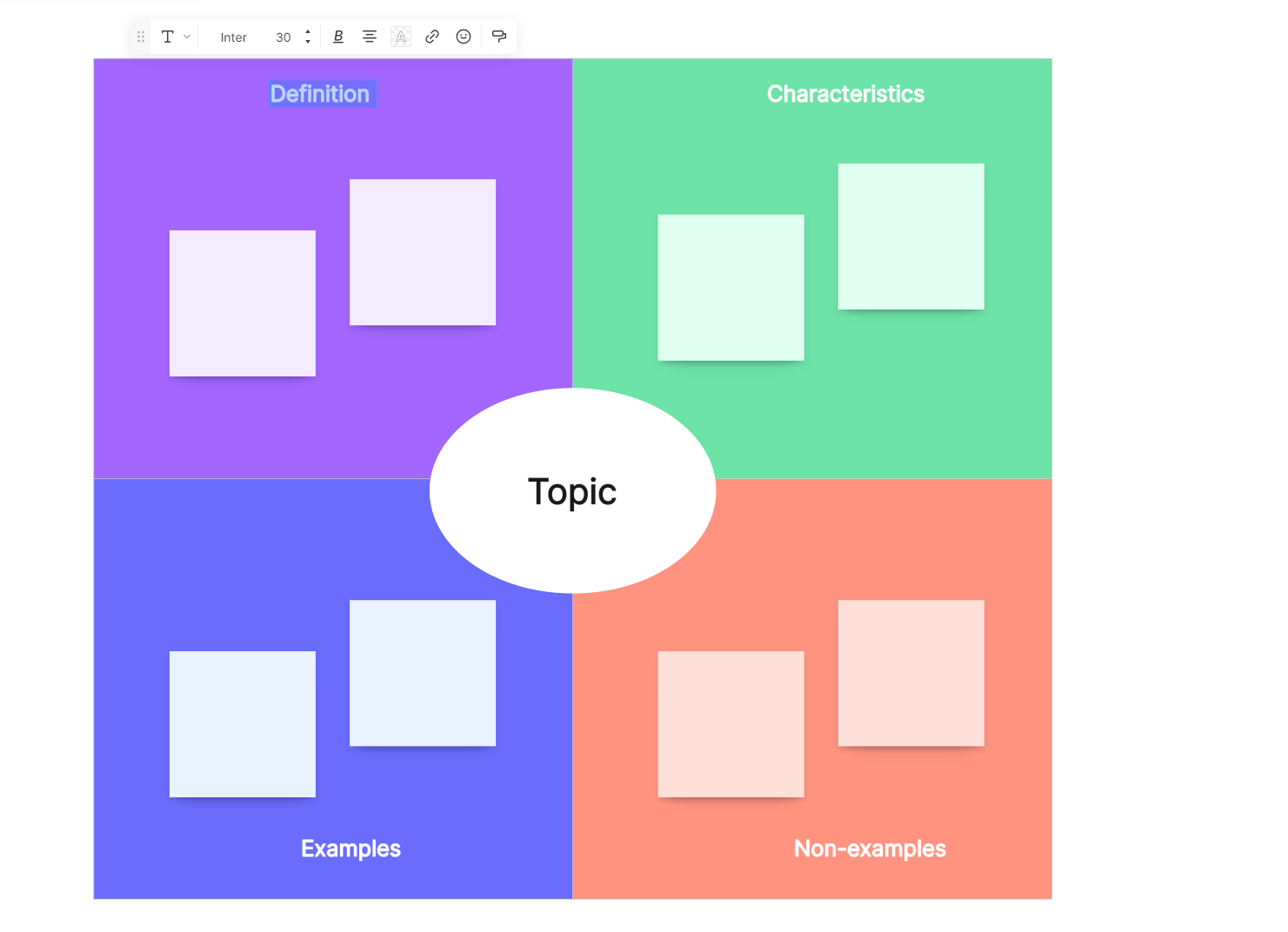
Step 4. Collaborate in Real-Time: Invite others to join your board for real-time collaboration. They can contribute their ideas and feedback directly onto the Frayer Model."
Step 5. Save and Share: Once you're done, you can save your work for future reference or share it with others via a link or by exporting it in various formats.

Part 5. Other Tips for Using Frayer Model for Vocabulary
Interactive Discussions:
Engage students in interactive discussions about selected vocabulary words. Encourage them to share their thoughts on the word's definition, characteristics, examples, and non-examples. This collaborative approach promotes a deeper understanding of the words.
Visual Representation:
Use visual aids to enhance the impact of the Frayer Model. Incorporate images, diagrams, or charts that relate to the word, reinforcing the visual-spatial aspect of learning and catering to diverse learning styles.
Integration with Reading and Writing:
Seamlessly integrate the Frayer Model into reading and writing activities. Have students create Frayer Models for key terms encountered in their reading assignments or use the model as a prewriting strategy for essays and reports.
Regular Review:
Reinforce vocabulary retention by periodically revisiting and reviewing the Frayer Models. This practice helps solidify the connection between the word and its meaning, ensuring long-term retention.
Conclusion
Incorporating the Frayer Model into vocabulary instruction provides a structured and comprehensive approach to word learning. By guiding students through the process of defining, describing characteristics, providing examples, and exploring non-examples, educators empower students to master new words with depth and precision. As a versatile and adaptable tool, the Frayer Model can be applied across various subjects and grade levels, making it a valuable asset in the educator's toolkit for enhancing vocabulary development. And Boardmix will let you create the Frayer Model more easily. Get the free trial now!








